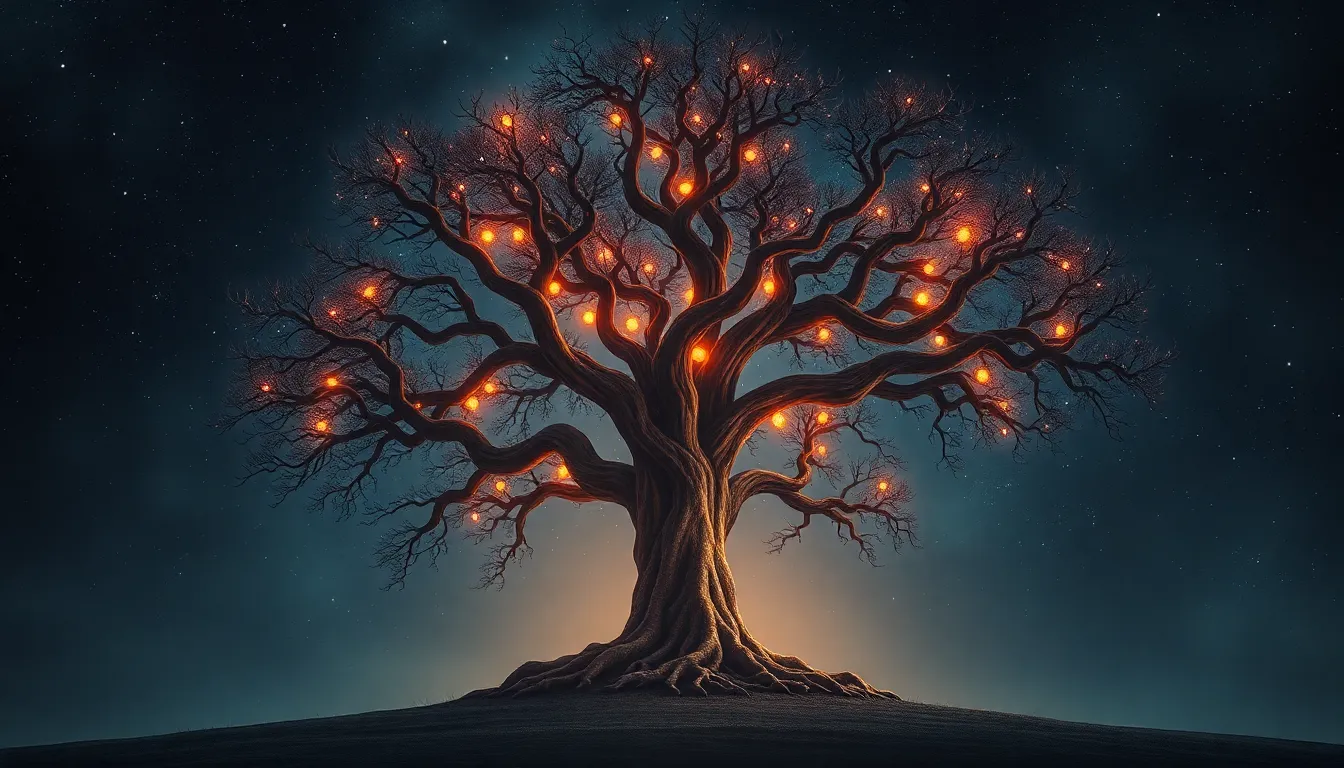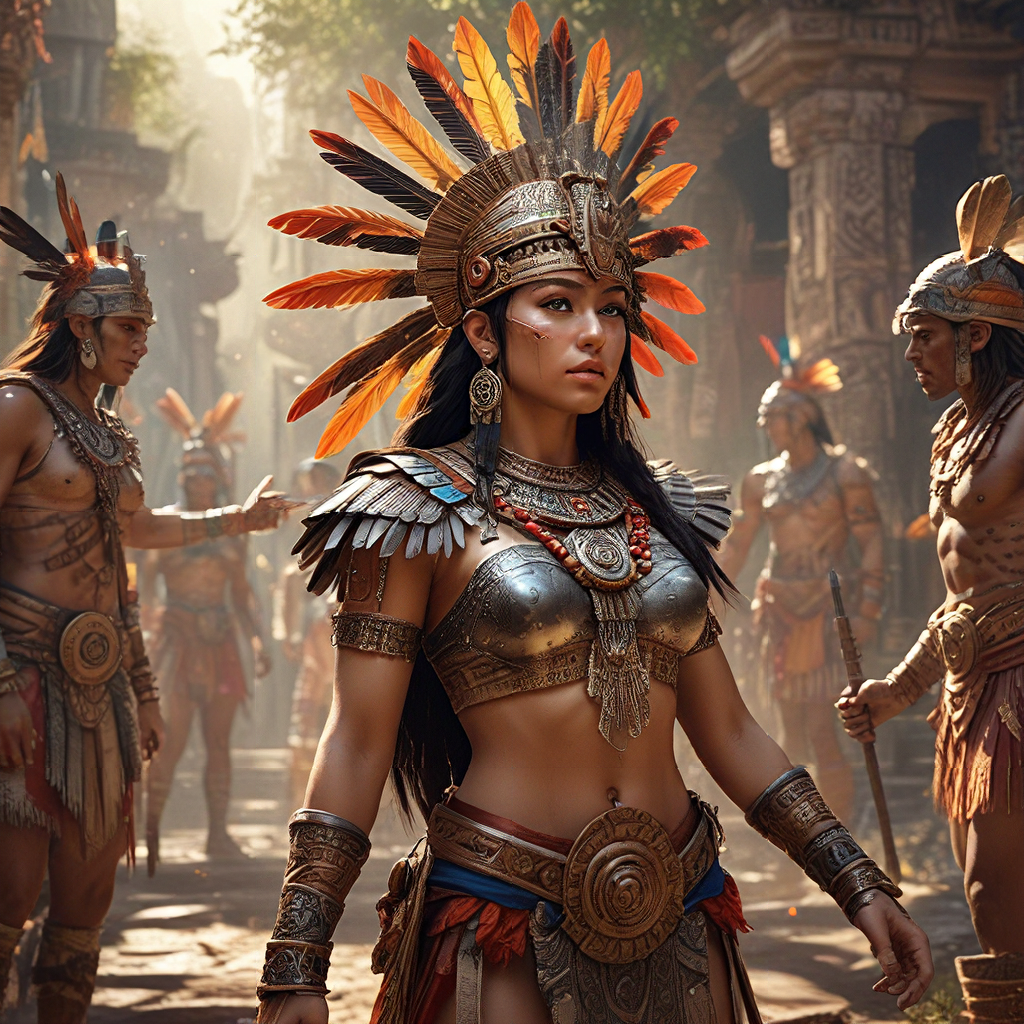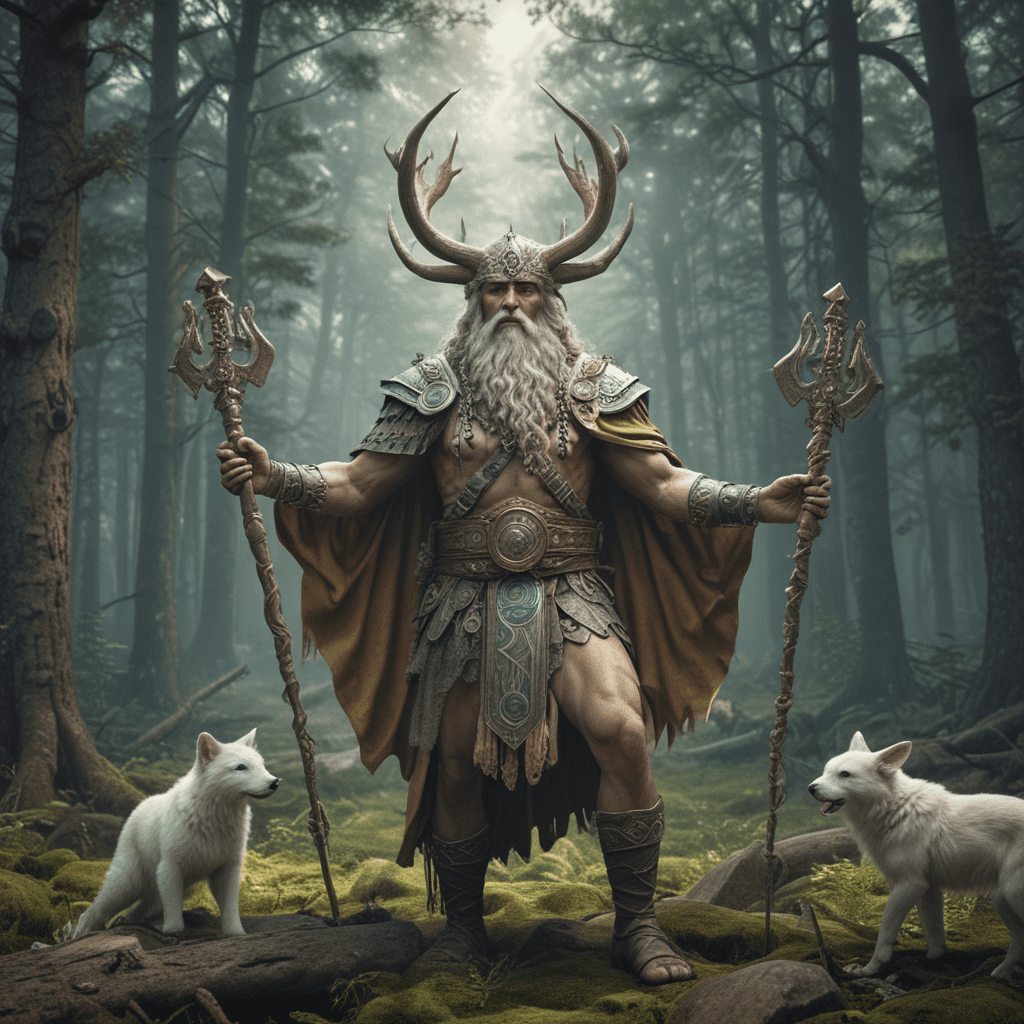The Tree of Life: Myths of Connection and Unity
I. Introduction
The Tree of Life is a powerful and ancient symbol that represents the interconnectedness of all life forms on Earth. It embodies the idea of growth, strength, and unity, illustrating how all beings are linked through a common ancestry and shared existence. Across various cultures and religions, the Tree of Life holds significant meaning, often representing the cycle of life, death, and rebirth.
This article aims to explore the myths surrounding the Tree of Life, shedding light on its rich history, cultural significance, and its enduring message of connection and unity among all living beings.
II. Historical Context of the Tree of Life
The origins of the Tree of Life can be traced back to ancient civilizations, where it first emerged as a central symbol in various mythologies and religious doctrines.
A. Origins in ancient civilizations
- Mesopotamian roots: The Tree of Life can be found in the mythology of ancient Mesopotamia, where it was often depicted as a sacred tree that connected the heavens, earth, and the underworld.
- Egyptian interpretations: In ancient Egypt, the Tree of Life was associated with the goddess Isis and the concept of resurrection, symbolizing eternal life and the interconnectedness of all beings.
B. Evolution of the symbol through the ages
As cultures evolved, the Tree of Life continued to adapt, taking on new meanings and interpretations. It became a universal symbol of growth and connection, transcending individual cultures and resonating with humanity’s quest for understanding and unity.
C. The Tree of Life in religious texts
The Tree of Life appears in numerous religious texts, including the Bible, where it symbolizes divine wisdom and eternal life in the Garden of Eden. Similarly, in the Kabbalistic tradition, it represents the structure of the universe and the connection between God and humanity.
III. The Tree of Life in World Mythologies
Throughout various mythologies, the Tree of Life takes on distinct forms, each reflecting the unique beliefs and values of the cultures that revere it.
A. The Tree of Life in Norse mythology
1. Yggdrasil and its significance
In Norse mythology, Yggdrasil is the immense and central sacred tree that connects all realms of existence. It is seen as the axis mundi, or the world tree, that binds together the nine worlds, including Asgard, Midgard, and Hel. Yggdrasil represents the interconnectedness of life, death, and rebirth, and its roots and branches symbolize the cyclical nature of existence.
B. The Tree of Life in Hinduism
1. The Ashvattha tree and its philosophical implications
In Hinduism, the Ashvattha tree (Ficus religiosa) is revered as a sacred Tree of Life, symbolizing the eternal cycle of life and the interconnectedness of all souls. It represents the idea that the material world is temporary, while spiritual truths are eternal. The tree’s roots represent the past, its trunk the present, and its branches the future, illustrating the continuity of life.
C. The Tree of Life in Indigenous cultures
1. Various interpretations and spiritual meanings
Indigenous cultures around the world often view the Tree of Life as a vital symbol of their relationship with nature. For many Native American tribes, the tree represents life, growth, and sustenance, embodying the sacred connection between humanity and the earth. It serves as a reminder of the importance of respecting and preserving the natural world.
IV. Symbolism of the Tree of Life
The Tree of Life is rich in symbolism, encompassing various themes that resonate deeply with human experiences.
A. Connection to nature and the environment
The Tree of Life symbolizes humanity’s connection to nature, reminding us of our dependence on the earth for survival and the importance of nurturing our environment.
B. Representation of family and ancestry
It also serves as a powerful metaphor for family and ancestry, illustrating how generations are interconnected and how our roots influence who we are.
C. The balance of life: birth, death, and rebirth
Finally, the Tree of Life embodies the cycle of life, highlighting the balance between birth, death, and rebirth, and the idea that life is an ongoing journey of growth and transformation.
V. The Tree of Life in Modern Spirituality
In contemporary spirituality, the Tree of Life has found new interpretations and significance, particularly within New Age movements and holistic practices.
A. New Age interpretations
Many New Age practitioners view the Tree of Life as a symbol of personal growth and spiritual awakening, often incorporating it into meditation and visualization practices to foster a sense of connection and unity.
B. The resurgence of interest in holistic practices
As people seek holistic approaches to wellness, the Tree of Life has re-emerged as a powerful symbol representing the interconnectedness of mind, body, and spirit.
C. Integration into personal growth and self-discovery
Individuals use the Tree of Life as a tool for self-discovery, exploring their roots and connections to others, as well as their place in the greater tapestry of life.
VI. The Tree of Life in Art and Literature
The Tree of Life has inspired countless artists and writers throughout history, serving as a poignant symbol in various forms of artistic expression.
A. Depictions in visual art
From ancient carvings to modern paintings, the Tree of Life has been depicted in numerous artworks, often symbolizing growth, unity, and the beauty of nature.
B. Symbolism in poetry and prose
In literature, the Tree of Life often appears as a metaphor for personal growth, resilience, and the intricate connections between individuals and their communities.
C. Contemporary artists and their interpretations
Today, many contemporary artists continue to explore the Tree of Life theme, using diverse mediums to express its relevance in modern society.
VII. Scientific Perspectives on the Tree of Life
From a scientific standpoint, the Tree of Life represents the complex relationships among all living organisms, illustrating the interconnectedness of life through evolutionary biology.
A. The biological Tree of Life: taxonomy and evolution
The biological Tree of Life, as depicted in evolutionary biology, shows how all species are related through common ancestry, branching out over millions of years.
B. The interconnectedness of all living beings
This scientific framework underscores the importance of biodiversity and the need for conservation efforts to protect the intricate web of life on our planet.
C. Implications for conservation and biodiversity
Understanding the Tree of Life from a scientific perspective highlights the urgency of preserving ecosystems and the diverse species that inhabit them, as every organism plays a vital role in maintaining ecological balance.
VIII. The Tree of Life as a Catalyst for Unity
The Tree of Life serves as a powerful catalyst for unity, promoting connections across cultures and fostering shared narratives.
A. Cultivating connections across cultures
By recognizing the universal themes embodied in the Tree of Life, individuals can cultivate connections that transcend cultural boundaries and promote understanding.
B. The role of storytelling in creating shared narratives
Storytelling is a vital tool in sharing the myths and meanings of the Tree of Life, allowing people to engage with one another and find common ground.
C. Initiatives promoting global unity inspired by the Tree of Life
Various initiatives aim to promote global unity through the symbolism of the Tree of Life, fostering collaboration and understanding among diverse communities.
IX. Critiques and Controversies Surrounding the Tree of Life
Despite its profound significance, the Tree of Life has faced critiques and controversies, particularly regarding its interpretation and appropriation.
A. Misinterpretations and appropriation of the symbol
Some argue that the Tree of Life has been misinterpreted or appropriated by various cultures, leading to a dilution of its original meanings and significance.
B. The challenge of universalizing cultural myths
Efforts to universalize the Tree of Life can overlook the unique cultural contexts and meanings, raising questions about authenticity and respect for diverse traditions.
C. Balancing tradition with modern interpretations
Finding a balance between honoring traditional meanings and embracing modern interpretations of the Tree of Life is a challenge that requires sensitivity and awareness.
X. Conclusion
In conclusion, the Tree of Life stands as a timeless symbol of connection and unity, transcending cultural and



